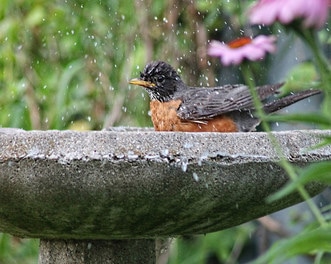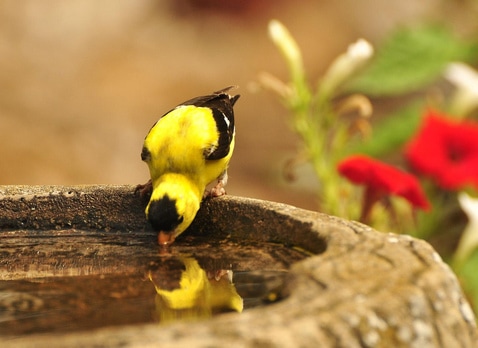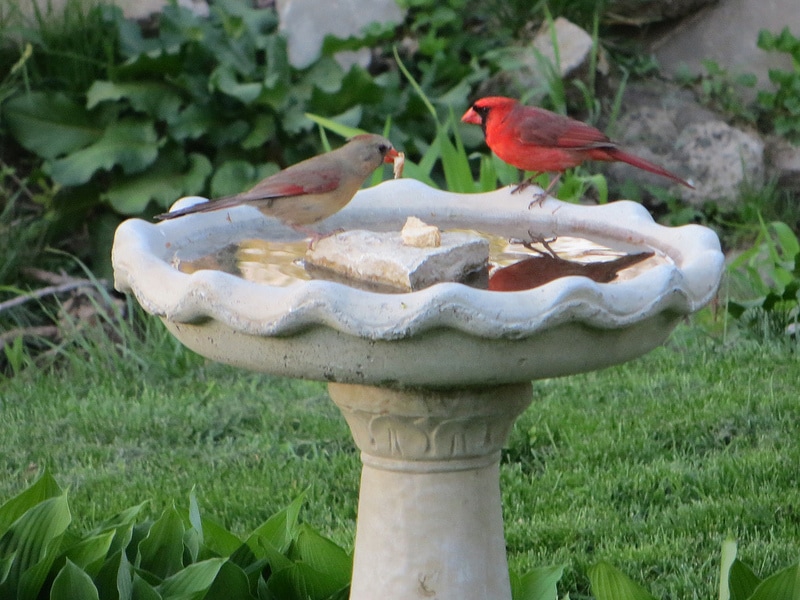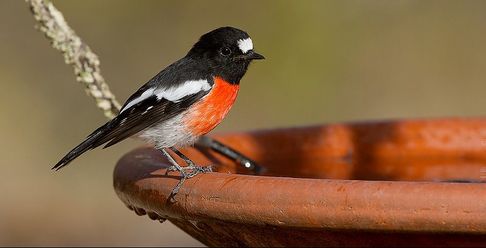The Intro
The Location, Location, Location
|
Running water is always a welcome addition to any outdoor area. Birds, however, are drawn to running water for drinking or bathing and will prefer one location over another. Most song birds must be vigilant when focusing on something other than becoming a meal. They will look for secure spots to drink and or bathe which means having your fountain placed close to a tree or shrub where your visitors might escape to, when danger comes around. This safe locationwill increase the number of visitors that will use the watery oasis. Keeping the water out of direct sunlight will also be a good idea so as not to promote the growth of algae. Some algae can be harmful to birds while other types will not. A partly shaded area where the morning sun catches the water would be ideal. Of course you should make sure you are able to see the guests without too much disturbance.
|
The Look
|
Fountains can be easy and relatively inexpensive. Some fountains like the one pictured here can be found at Walmart, Costco or on Amazon.com for less than $60.00. These are simple and it is possible to have them running on your deck in under 15 minutes. They are usually made from stone or clay and have features like bamboo or pebbles to make them more attractive. There are more elaborate fountains that can be assembled and have multi-tiered basins where a larger sound of water filling the air is the goal. These are still relatively simple but may be somewhat heavier and you may need some assistance with getting them into place. The custom in-ground fountains have no limits and can have one pool or several with streams running between them or grand waterfalls ending in a pool. You will need some time, space and money for this option but the rewards of having this type of water feature are immense. No matter what you choose, there are a couple things to remember about the shape. The birds will want a sturdy area where they will land and be able to drink safely from. If they are planning to use the fountain as a bath it is always better to have a shallow pond where the birds can stand belly deep. To accommodate all sizes, it is better to have a gradually sloped bottom where at all possible. Having several flat rocks at different levels will accommodate several types of birds as well.
|
|
The Faucet
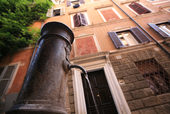
The Clean Bill of Health
|
It is imperative that the fountains are cleaned on a regular basis so that your visitors aren’t getting more than just a drink of water. Depending on the amount of use and location, that could mean every couple of days. Stagnant water carry bacteria and algae if left too long. Be cautioned that if you are going to use cleaning agents like dilute bleach solutions, it is very important that the cleaner is completely removed from the fountain before you fill it up again for your feathered visitors. Most fountains are good to go with a spray from the hose as most city water sources are chlorinated. Chlorine will evaporate from the standing water within the day and is perfectly safe. This should keep the fountain clean and free from most harmful elements.
|
The Wallet
